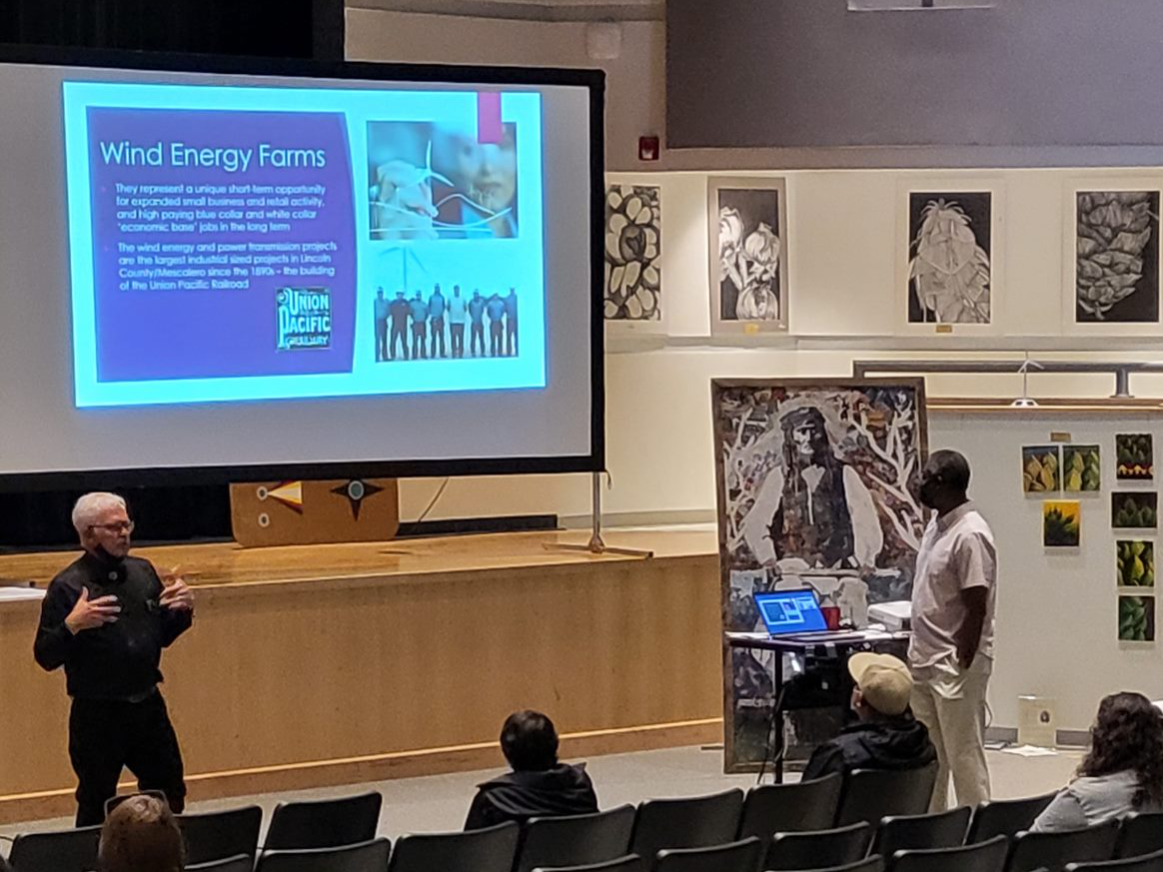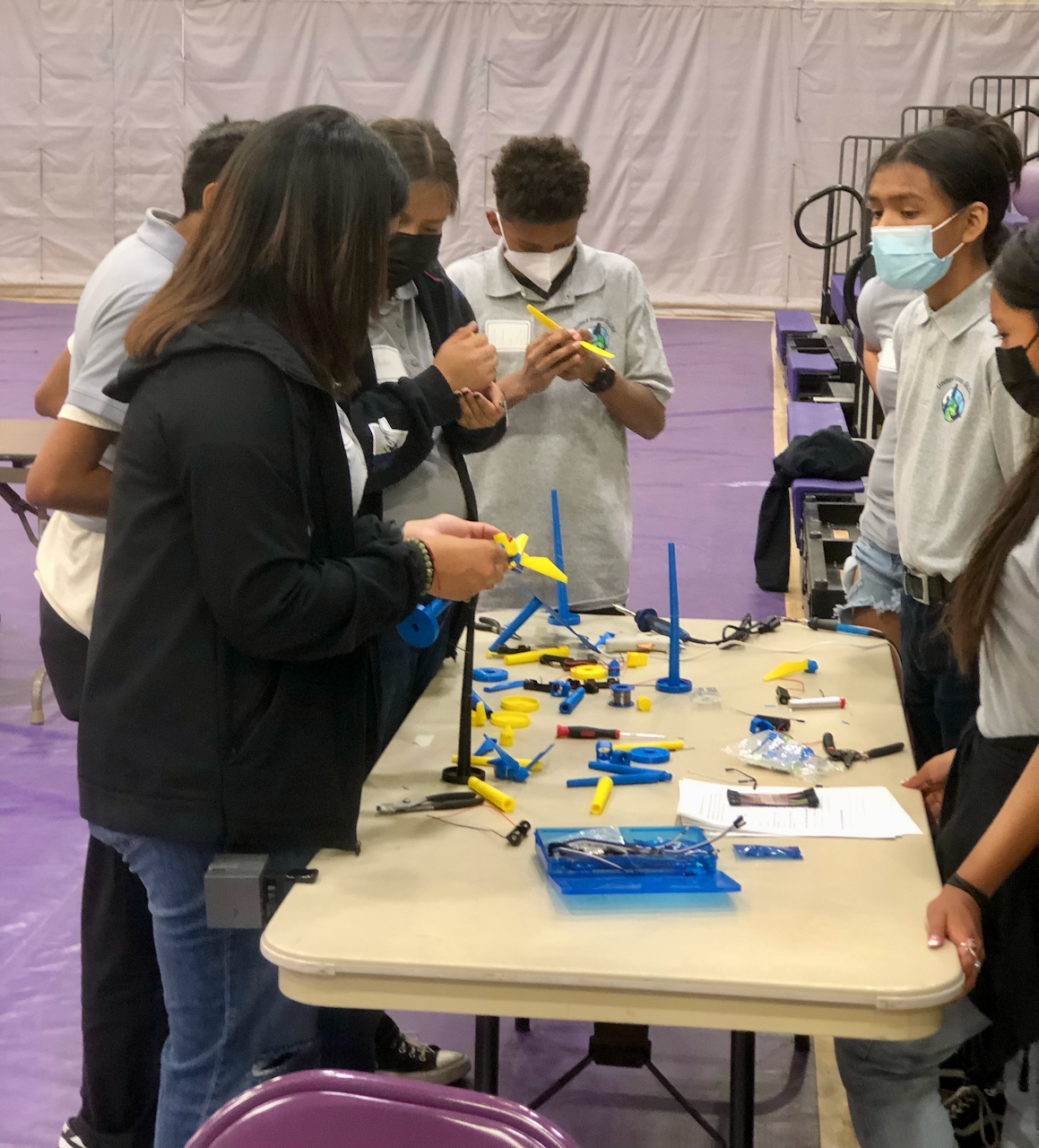News - United States of America
Mescalero Apache School 2022 Student Research Symposium Highlights
Observations by Holli Kohl, GLOBE Observer Coordinator, NASA Goddard
Regional in-person Student Research Symposia (SRS) were not held in 2022 due to the ongoing COVID pandemic; however, with support from NASA Grant no. 80NSSC18K0135 and Youth Learning As Citizen Environmental Scientists (YLACES), the GLOBE U.S. Coordination Office was able to support in-person local SRS where students shared the results of field investigations using GLOBE protocols or data. Learn more about all of the 2022 local SRS here.
A Student Research Symposium was held on 30 April 2022, in Mescalero, New Mexico, at the Mescalero Apache School, hosted by GLOBE Teacher Nate Raynor. Ten students attended, five from Mescalero Apache School and five from Santa Fe Indian School. The students ranged in grade level from 8th to 12th grade. Four teachers participated: Nate Raynor and Beth Powers from Mescalero Apache School, Kate Sallah from Santa Fe Indian School, and Ravyn Deerinwater from Zia Middle School (Las Cruces, NM). While the SRS was planned to include 50 students from Zia Middle School, these students were unable to attend at the last minute. One scientist reviewer, Dr. Eric Metzler, attended, as well as two representatives from the Mescalero Apache Tribal Council, Eric Mendez and Owen Little. The school principal and secretary supported the event. The final participants were GLOBE Mission Earth partner Marcia Barton, GLOBE Observer partner Holli Kohl, and the keynote speaker Dr. Jim Miller.
The event started with a traditional Apache prayer followed by the keynote address. The students were interested in the talk about careers in wind energy, an emerging field that offers relatively high salary jobs in New Mexico.
After the keynote, two GLOBE teams from Mescalero Apache School presented posters. Each student was paired with a student from the Santa Fe Indian School for the peer review section of the event. The students were given review forms and instructions about how to provide peer review.
The peer review was both written and oral in the form of a question and answer session. The students asked several relevant questions that indicated comfort with the scientific process. How do you know the measurements are good? Were you able to compare the data between the two sensors? How did they compare? What will you do next to address this question? They also asked specific questions about the data or application of the data. The discussion took far longer than anticipated, so the students took a lunch break before completing their peer review of the second group of projects. The students who received feedback said that it was useful to get feedback from their peers.
The Zia Middle School teacher, Ravyn Deerinwater, brought printed slides of her students’ six research reports for peer review. The Santa Fe and Mescalero students worked in pairs to review these projects using the review form.
The Zia Middle School students reported on GLOBE cloud and temperature (air and surface) measurements. Some of the peer reviewers hadn’t done the temperature measurements before and hadn’t thought to compare cloud cover to temperatures. A few students said they liked seeing how other students structured their research because it gave them ideas they could apply to their own work.
The Santa Fe students attended as peer reviewers but said that peer review gave them ideas for their own work next year. The 2021-22 school year had been mostly hybrid for them, which limited what they were able to do this year.
After peer review was over, the Mescalero students shared some of the robotics and drone projects they have been involved in. The students were most interested in a wind tower activity, and the Santa Fe students built their own wind towers with support from the Mescalero students and their teacher, Mr. Raynor.
Overall, the students had a good time. The time they were required to work together seemed to be the time they were most animated about—even more than the fun activity time at the end. Though it was clearly not planned to work this way, it was serendipitous that lunch occurred halfway through their peer review time because they mixed during lunch. These peer connections seemed to be as helpful as science feedback. They were talking about “next time” before the end of the day.
Congratulations to all the student researchers and good luck “next time”!
Image descriptions (top to bottom): Dr. Jim Miller gives the keynote speech; two students present their research; students build wind towers.
Student Research Reports: U.S. Student Research Symposia (SRS)News origin: United States of America





